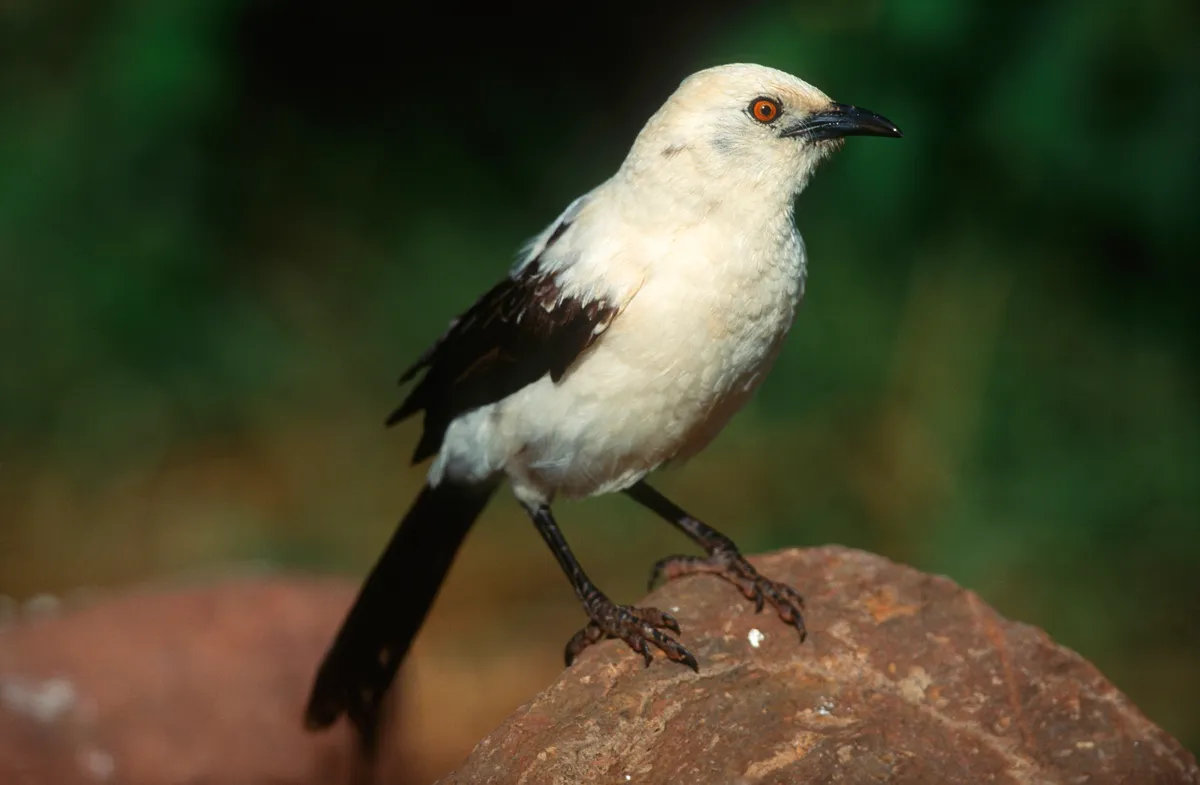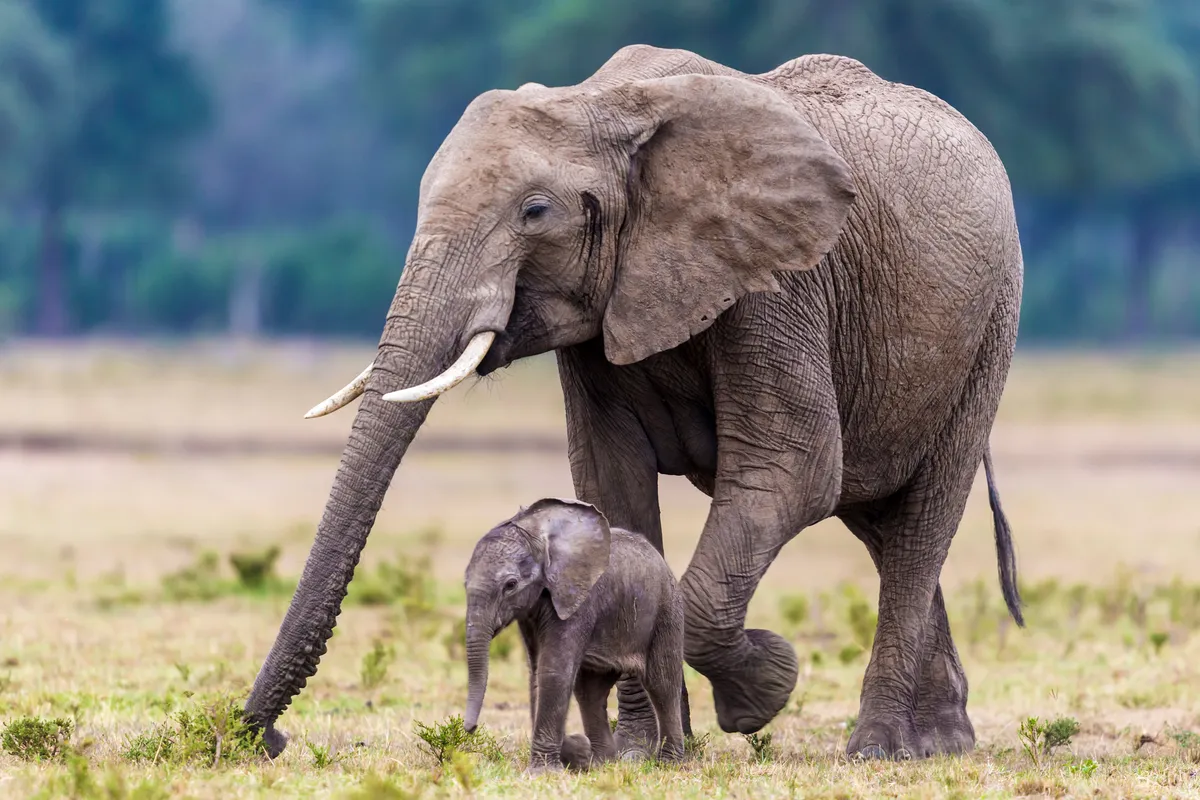Animals ‘teaching’ their young? The idea doesn't sound particularly controversial, does it?
But it is. Teaching is so fundamental to how our children learn that it was historically considered a uniquely human trait. We are, after all, intelligent, intentional beings, so surely teaching must reflect these traits?
There is an assumption that when we teach, we are using our big brains to work out the best methods, balancing our own beliefs and motivations with what we know about those of our pupils. This capability to predict what others are thinking is termed ‘theory of mind’. For a long time, other animals were thought to lack any of these ‘mind-reading’ abilities, so they were also assumed incapable of teaching.

So who was first to prove that animals can teach?
It was a little species of ant, in 2006 - a discovery that caused shockwaves. “It was the last thing people expected,” says Nichola Raihani, professor of evolution and behaviour at University College London. “For such a long time, people were looking for examples of teaching in chimpanzees. And then it comes from an ant.”
The ants in question were rock ants, which live in colonies of 150-200 individuals, nesting in crevices. They also nest between microscope slides, making them great subjects for study. At the University of Bristol, Nigel Franks and his team were studying how the ants communicated the location of food to their colony-mates.
They observed something known as ‘tandem-running’, in which a knowledgeable ant (a ‘teacher’) led a naive ant (a ‘pupil’) to the meal. The pupil kept track of the teacher by tapping her antennae on the teacher’s bottom, sometimes pausing to take in visual landmarks, in order to learn the route for herself.
When this happened, the teacher also stopped, making its journey on average four times slower than if it was going it alone. And yet, tandem-running meant that more ants could learn the route and, in turn, guide more naive ants, enabling the colony to reach the food faster overall.
The study sounds controversial...
It was! But it had been carefully designed to meet the three key criteria for animal teaching, put forward in 1992 by biologists Tim Caro and Marc Hauser. First, knowledgeable ants clearly adjusted their behaviour towards their pupils; second, tandem-running was costly for the teacher; third, pupils learned the route because of the teacher’s behaviour.
The implications were huge. We humans thought our ability to teach made us special – yet even a humble ant could do it.
Wow! What other studies have looked at whether animals can teach?
The next example came the Kalahari Research Centre, where meerkats are so accustomed to people that they ignore them. “You can observe them in an enormous amount of detail,” says Alex Thornton, professor of cognitive ecology at the University of Exeter, who studied the species for his PhD.
Meerkats are cooperative breeders, meaning that as well as a dominant pair of breeding individuals, groups also include a variable number of non-breeding ‘helpers’, who all pitch in to look after the pups. Meerkats are carnivores that eat a range of prey and are partial to feasting on poisonous scorpions, and Thornton wanted to find out how the youngsters learned how to handle such a dangerous prey item.

And...?
Recording thousands of feeding events, he discovered something remarkable: the adults were provisioning the pups with ‘age-appropriate’ food. The youngest individuals received dead prey, and as they got older, received live animals. These were either ‘child-proofed’ (a scorpion without its sting, for instance) or, for the oldest, left intact. The adults experienced a cost when they caught a scorpion and their clumsy offspring allowed it to escape. Further tests proved that the young were learning because of the adults’ behaviour. Meerkats were teachers too.
How else can teaching manifest in the animal kingdom?
Animal teaching isn’t just about learning routes or skills. Also being studied at the Kalahari Research Centre were southern pied babblers – striking white-and-black birds that, like meerkats, are cooperative breeders. Studying them for her PhD, Raihani noticed that the adults made a distinctive ‘purr’ when feeding the chicks, and after a certain age, the chicks responded to the call by begging. The adults continued to purr-call to fledged birds, which now responded by approaching the caller.
Raihani wasn’t thinking about teaching initially. “Just seeing the birds fly to the nest and give a weird call, you don’t think, ‘oh, they’re teaching’. You have to piece that puzzle together,” she says. She discussed her observations with Thornton and they wondered whether this could be a different kind of teaching.
The data agreed. Adults seemed to be conditioning their chicks to respond to purr-calls by associating them with meals (much like Pavlov’s dog). Adults weren’t directly benefitting by calling; in fact, the most prolific callers gained the least weight. And by playing purr-calls to some broods before the age at which the adults started to make these calls to them naturally, Raihani could show that it was from the calls that the chicks learned, rather than something else.

So why go to all that effort?
By teaching their chicks to respond to a call, they had a tool for gathering their fledglings closer. Like a teacher blowing a whistle to assemble his or her pupils, the adults could lead their offspring towards food or away from danger.
Ants, meerkats and babblers aren’t usually grouped together, yet they all showed unequivocal evidence for something apparently unique to humans – and the response from other scientists was polarised. But the genie was out of the bottle. Not only could teaching be observed in animals, but it also quite conclusively did not require advanced cognition. “The whole point is that meerkats teach, despite not being clever,” says Thornton.
What other forms of teaching are there?
Superb fairy wren mothers have been found to teach their embryos a ‘vocal password’ . And several other studies either claim evidence for, or are highly suggestive of, teaching. These include dolphins communicating hunting techniques, elephants educating younger females how to respond to bulls in musth, and chimpanzees facilitating tool-use in their offspring. The difficulty is that none of them fulfil all of Caro and Hauser’s criteria. But does that really mean that only a handful of non-human animals can teach?

What about apes - our closest relative? Can they teach?
Some 30 years after Caro and Hauser put forward their definition, the question of whether apes can teach remains disputed. Christophe Boesch, professor at the Max Planck Institute for Evolutionary Anthropology, initiated a study of the wild chimpanzees of Taï National Park on the Ivory Coast in 1979, which continues to this day. Members of this population crack open hard Panda nuts by placing them on anvils and pounding them with rocks – a complex behaviour that takes years to learn and yields rich pickings in the form of highly calorific nut meat. In other words, a potentially good system in which to investigate teaching.
In 1991, he published his first observations of teaching in these chimpanzees, which included two examples where a mother appeared to help her infant learn by, for example, repositioning a nut into a better position for cracking. Since then, more reports of teaching have been documented among the Taï chimpanzees including, recently, a fascinating comparison of nut-cracking in chimpanzees and the indigenous Mbendjele BaYaka people of the Congo.

But... is there a but?
I'm afraid so. Caro and Hauser’s criteria haven’t been conclusively met for chimpanzees, something that may simply reflect the practical difficulties of experimentally evaluating them in wild, slow-developing animals. Boesch accepts that there is some scepticism over whether chimpanzees should be considered teachers, but remains convinced that this is how the Taï chimpanzees are learning, because of the inherent complexity involved in mastering nut-cracking behaviour. He explains that if teaching is an adaptation to environmental challenges, when juveniles cannot learn quickly enough on their own to survive, then it could be far more widespread.
And what about orangutans? Do orangutans teach their young?
Orangutans, while great apes, have never been thought of as teachers. A mother is closely watched by her infant while she strips leaves from a vine or uses a tool to extract seeds from a Neesia fruit, but other than tolerating its frequent attempts to beg for and take food, she is always thought to be a passive role model, not teaching.
But a recent study found that mothers may be more active than thought in helping their infants to learn. “It took a long time to understand the orangutan way of doing it,” says Caroline Schuppli from the Max Planck Institute of Animal Behavior.
Decoding the subtleties of orangutan behaviour revealed that mothers adjust their tolerance levels according to an infant’s age and how difficult a particular food type is to process and eat. The missing piece is evidence that infants learn because of this – they may just improve their food handling skills as they get older. Schuppli is therefore careful not to claim that orangutans teach; to do so she needs to show that maternal tolerance levels impact the speed at which infants learn.

So what's next?
If further research shows that teaching does occur among orangutans, the next question would be how they do it. Clearly, having a theory of mind isn’t a prerequisite, and that may be true of humans too. And yet, the information processing system of an ape is vastly more complex than that of an individual ant, so is it feasible that they’re achieving the behaviour in different ways?
“That’s the big question,” says Schuppli. “What is it that triggers their choice in sharing or not sharing? What do mothers really understand about the development of their offspring? This finding has opened a whole new avenue of research.”
Main image © Getty
